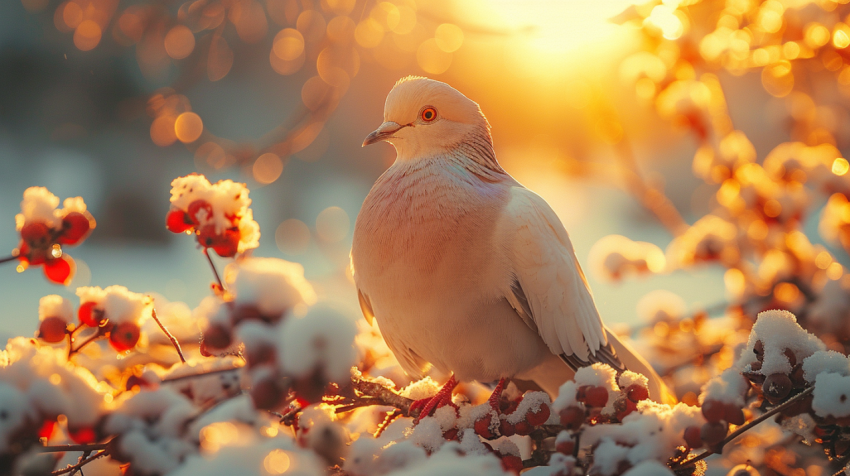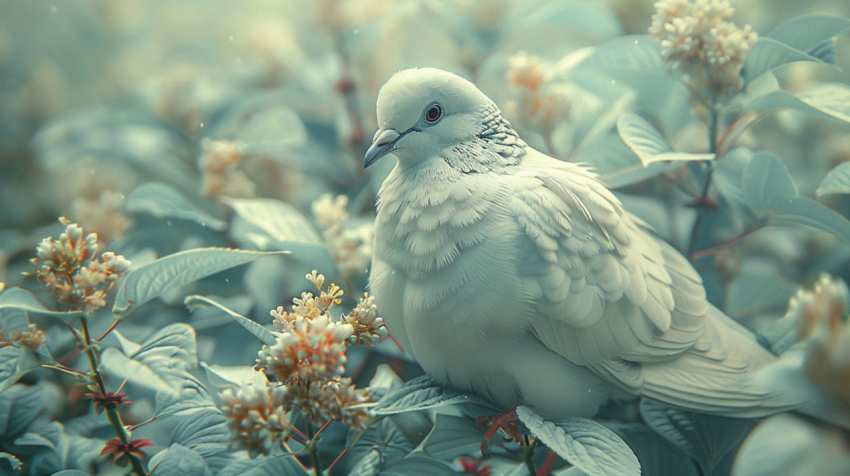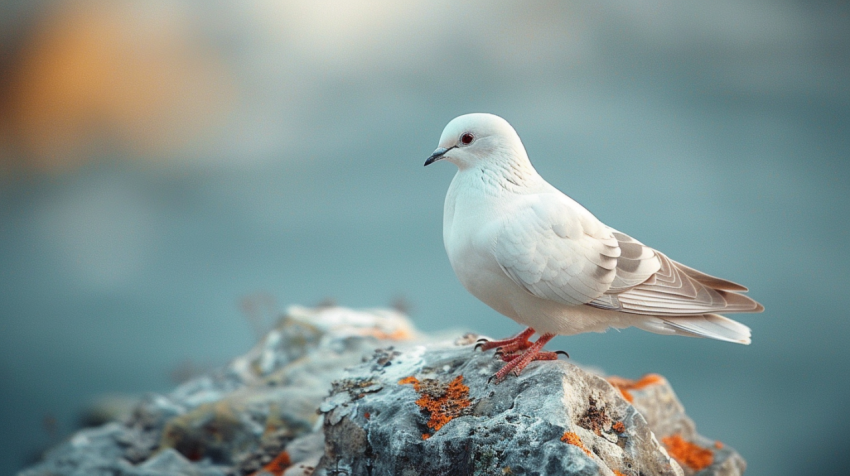



Doves: Symbols of Peace & Love - A Deep Dive
Doves, with their soft cooing calls and graceful flight, have long held a special place in human hearts and cultures. Often associated with peace, love, purity, and hope, these gentle birds have become powerful symbols across various religions, mythologies, and artistic expressions. This in-depth exploration will delve into the captivating world of doves, examining their diverse species, physical characteristics, behavior, habitat, diet, breeding patterns, and the enduring reasons behind their profound symbolic meaning.
What are Doves?
Doves belong to the family Columbidae, which also includes pigeons. In fact, the terms "dove" and "pigeon" are often used interchangeably, with "dove" typically referring to smaller species with pointed tails, while "pigeon" is often used for larger species with square or rounded tails. There are over 344 species of doves and pigeons worldwide, exhibiting a remarkable diversity in size, color, and habitat.
Key Characteristics of Doves:
- Plump Bodies: Doves generally have plump bodies with small heads and short legs.
- Soft Plumage: Their feathers are typically soft and come in a variety of colors, often in shades of gray, brown, white, and cream. Some species display iridescent patches on their necks or wings.
- Gentle Nature: Doves are known for their gentle and docile temperament.
- Monogamous Pairings: Many dove species form strong, monogamous pair bonds that can last for life.
- Cooing Calls: Doves are famous for their soft, cooing vocalizations, which are often used for communication between mates and during courtship.
- Seed-Based Diet: Most doves are primarily granivorous, feeding on seeds, grains, and fruits.
Common Dove Species:
While numerous dove species exist, some are more widely recognized than others:
- Rock Dove (Columba livia): Also known as the common pigeon, this is the species most often found in urban environments. They are highly adaptable and come in a wide range of color variations. This species is the ancestor of domestic pigeons.
- Mourning Dove (Zenaida macroura): A slender dove with a long, pointed tail, the Mourning Dove is one of the most abundant and widespread birds in North America. They are known for their mournful cooing call.
- Eurasian Collared-Dove (Streptopelia decaocto): This dove has rapidly expanded its range across Europe, Asia, and North America. It is characterized by a distinctive black collar on the back of its neck.
- White-winged Dove (Zenaida asiatica): Found in the southwestern United States and Mexico, this dove is known for the prominent white patches on its wings.
- Ring-necked Dove (Streptopelia capicola): Native to Africa, this dove is a popular cage bird and has established feral populations in some parts of the world. It is similar in appearance to the Eurasian Collared-Dove but has a slightly different call.
Habitat and Distribution:
Doves are found on every continent except Antarctica, inhabiting a wide range of environments, from deserts and grasslands to forests and urban areas.
- Adaptability: Doves are highly adaptable birds and can thrive in both natural and human-modified landscapes.
- Urban Dwellers: Some species, like the Rock Dove, have adapted exceptionally well to urban environments, where they find ample food and nesting sites.
- Migration: While some dove species are resident year-round, others, like the Mourning Dove, undertake seasonal migrations.
Diet and Feeding:
Doves are primarily herbivorous, with most species feeding on seeds, grains, and fruits.
- Seeds: Doves have specialized beaks and digestive systems adapted for consuming seeds. They often forage on the ground, pecking at seeds and grains.
- Fruits: Some dove species, particularly those found in tropical regions, consume a significant amount of fruit.
- Crop Milk: A unique characteristic of doves and pigeons is their ability to produce "crop milk," a nutritious, milk-like substance secreted from the lining of their crop (a part of their digestive tract). Both parents feed this "milk" to their young.
Behavior and Social Structure:
Doves are generally social birds, often found in pairs or flocks.
- Flocking: Outside of the breeding season, many dove species form flocks, which can range in size from a few individuals to hundreds or even thousands of birds.
- Courtship Displays: Male doves engage in elaborate courtship displays to attract females. These displays often involve bowing, cooing, and displaying their plumage.
- Nesting: Doves typically build simple, platform-like nests made of twigs and sticks. They often place their nests in trees, on ledges, or in other sheltered locations.
Breeding and Reproduction:
- Monogamy: As mentioned earlier, many dove species are monogamous, forming strong pair bonds.
- Clutch Size: Doves typically lay 1-2 white eggs per clutch.
- Incubation: Both parents share incubation duties, with the male often incubating during the day and the female at night. Incubation periods vary by species but generally last around 14-19 days.
- Parental Care: Both parents care for the young, feeding them crop milk and later regurgitated seeds.
- Fledging: Young doves, called squabs, fledge (leave the nest) after about 12-18 days, depending on the species.
Doves as Symbols of Peace:
The dove's association with peace has deep roots in various cultures and religions:
- Ancient Mesopotamia: In ancient Mesopotamian mythology, the dove was associated with Inanna (Ishtar), the goddess of love, fertility, and war.
- Biblical Story of Noah's Ark: In the biblical story of Noah's Ark, a dove is sent out from the ark after the floodwaters recede. It returns with an olive branch, symbolizing the end of the flood and the renewal of life. This story has cemented the dove's status as a symbol of peace, hope, and new beginnings.
- Ancient Greece: In Greek mythology, the dove was associated with Aphrodite, the goddess of love and beauty.
- Christianity: In Christianity, the dove is often depicted as a symbol of the Holy Spirit. In the New Testament, the Holy Spirit descends upon Jesus in the form of a dove during his baptism.
- Modern Symbolism: The dove's association with peace was further popularized in the 20th century by artists like Pablo Picasso, whose "Dove of Peace" became an iconic symbol of the peace movement.
Doves as Symbols of Love and Fidelity:
- Monogamous Pairings: The strong pair bonds formed by many dove species have contributed to their association with love, fidelity, and devotion.
- Courtship Rituals: The gentle cooing and courtship displays of doves are often seen as romantic and have further enhanced their connection to love.
- Aphrodite/Venus: The dove's association with the goddesses of love in Greek and Roman mythology has also contributed to this symbolism.
Conservation Status:
The conservation status of dove species varies widely.
- Least Concern: Many dove species, such as the Mourning Dove and the Rock Dove, are abundant and classified as species of Least Concern by the IUCN.
- Threatened Species: Some dove species, particularly those with limited ranges or specialized habitat requirements, are threatened by habitat loss, hunting, and other factors. Examples include the Pink Pigeon (Nesoenas mayeri) of Mauritius and the Socorro Dove (Zenaida graysoni) of Mexico, both of which are critically endangered.
Conclusion:
Doves are fascinating birds with a rich history and a profound symbolic significance. Their gentle nature, graceful flight, and soft cooing calls have made them enduring symbols of peace, love, hope, and new beginnings. Whether you encounter them in the wild, in urban environments, or in works of art and literature, doves continue to inspire and uplift us with their timeless message of peace and harmony. By appreciating these remarkable birds and supporting conservation efforts, we can help ensure that their gentle presence continues to grace our world for generations to come.
Dove, Pigeon, Dove Symbolism, Dove Meaning, Peace Dove, Dove of Peace, Types of Doves, Mourning Dove, Rock Dove, White Dove, Dove Facts, Dove Habitat, Dove Diet, Dove Call, Dove Nest, Dove Eggs, Dove Bird, What Do Doves Eat, Dove Love, Dove Courtship.

